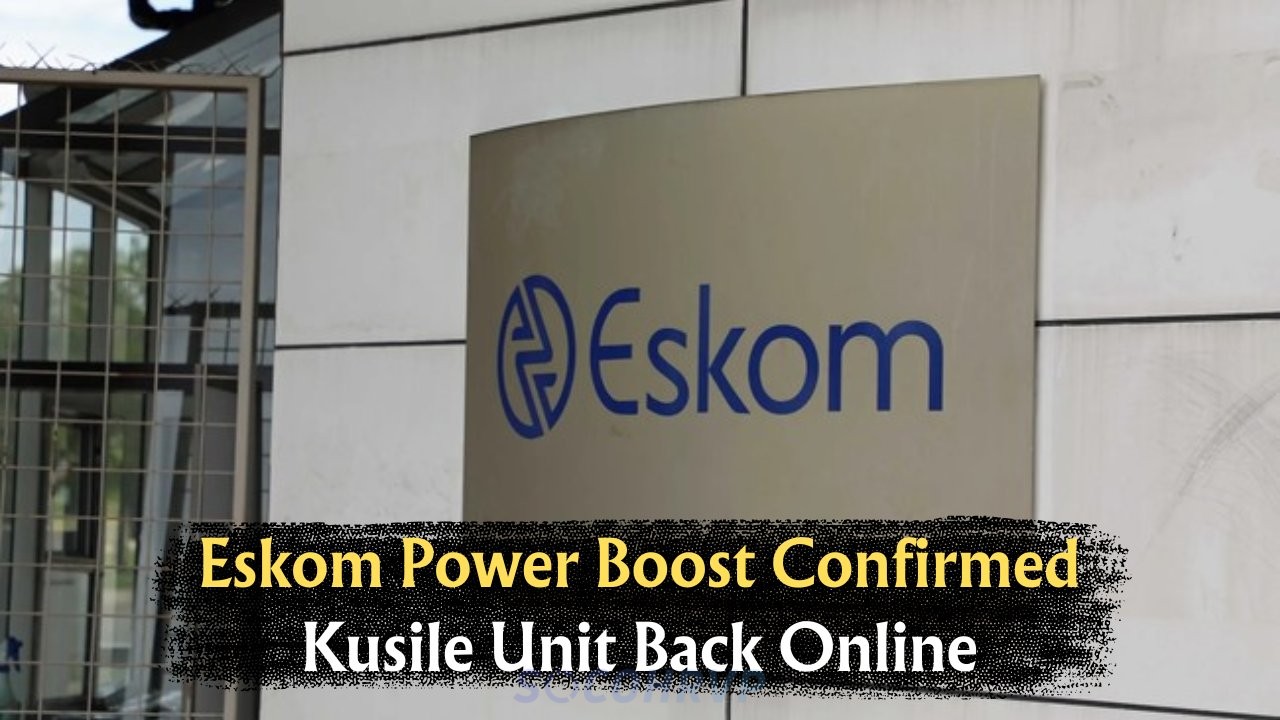Kusile Unit 6 Powers Up in October: As South Africa continues to tackle its energy challenges, the activation of Kusile Unit 6 in October brings a much-needed boost to the national grid. Eskom, the country’s primary electricity supplier, has successfully integrated an additional 800 MW of power, significantly enhancing its generation capacity. This development is a critical step forward in addressing the ongoing electricity shortages and frequent load-shedding that have plagued South Africa in recent years. The increased capacity not only stabilizes the national grid but also promises to support the country’s economic growth by providing more reliable electricity to homes and businesses alike.
Impact of Kusile Unit 6 on South Africa’s Energy Landscape
The addition of Kusile Unit 6 to the grid marks a pivotal moment in South Africa’s energy sector. With an extra 800 MW, Eskom’s ability to meet demand during peak hours is significantly enhanced. This improvement is particularly crucial in reducing the frequency and severity of load-shedding, which has long disrupted daily life and economic activities. The operationalization of this unit not only adds to Eskom’s current capacity but also aligns with the government’s strategic plan to diversify energy sources and improve infrastructure. The successful integration of this unit is a testament to the strides being made towards sustainable energy solutions.
- Reduction in load-shedding incidents.
- Increased economic productivity.
- Enhanced energy reliability for consumers.
- Support for technological and industrial growth.
- Contribution to national energy security.
Technical Specifications of Kusile Unit 6
Kusile Power Station, located in Mpumalanga, is one of the largest coal-fired power plants in the world, and Unit 6 is the latest addition to its lineup. This unit was constructed with cutting-edge technology designed to minimize environmental impact while maximizing efficiency. With the ability to generate 800 MW of electricity, it plays a crucial role in bolstering the supply side of South Africa’s power equation. The unit features advanced emissions control technologies, including flue-gas desulfurization, which significantly reduces sulfur dioxide emissions, a common byproduct of coal combustion.
| Feature | Details |
|---|---|
| Location | Mpumalanga, South Africa |
| Capacity | 800 MW |
| Technology | Flue-gas desulfurization |
| Environmental Impact | Reduced sulfur emissions |
Economic Benefits of Increased Generation Capacity
The introduction of Kusile Unit 6 is not only a technical milestone but also an economic catalyst. By increasing the generation capacity, South Africa can expect a more stable power supply, which is fundamental for economic activities. Industries that rely heavily on consistent power, such as manufacturing and mining, are likely to experience fewer disruptions, leading to increased productivity and job creation. Furthermore, this boost in capacity can attract foreign investments, as reliable energy is a key consideration for international businesses looking to establish operations in South Africa.
- Stimulation of local industries.
- Creation of new job opportunities.
- Attraction of foreign investment.
- Support for small and medium enterprises (SMEs).
- Enhancement of public services.
Environmental Considerations and Measures
While the expansion of coal-fired power plants is often scrutinized for its environmental impact, Kusile Unit 6 has been designed with sustainability in mind. The unit’s state-of-the-art emissions control systems ensure that its operation adheres to stringent environmental standards, reducing its carbon footprint. These measures are part of a broader strategy to transition towards a more sustainable energy mix in South Africa, which includes the integration of renewable energy sources such as solar and wind power.
| Environmental Feature | Benefit | Implementation |
|---|---|---|
| Advanced Emissions Controls | Reduced air pollution | Flue-gas desulfurization |
| Water Conservation | Minimized water usage | Recycling systems |
| Waste Management | Efficient waste disposal | Recycling programs |
Community Impact and Social Responsibility
The commissioning of Kusile Unit 6 has implications beyond just power generation; it also affects local communities. Eskom has been actively involved in social responsibility initiatives, ensuring that the communities surrounding the power station benefit from its operations. This includes providing employment opportunities during the construction and operational phases, as well as investing in local infrastructure and community development projects. The company aims to foster positive relationships with communities while contributing to their socio-economic growth.
- Job training programs for local residents.
- Investment in community health services.
- Support for educational initiatives.
- Infrastructure development projects.
Future Prospects for South Africa’s Energy Sector
| Aspect | Future Outlook |
|---|---|
| Renewable Energy | Increased adoption |
| Energy Security | Improved reliability |
| Technological Advancements | Continued innovation |
| Economic Growth | Sustained increase |
Challenges and Opportunities Ahead
Despite the positive developments, South Africa’s energy sector still faces challenges. The reliance on coal remains a point of contention, with calls for a more aggressive shift towards renewable energy sources. However, the introduction of Kusile Unit 6 opens up opportunities for innovation and collaboration in the energy sector. The government and private sector must work together to balance economic growth with environmental sustainability, ensuring that future generations inherit a thriving and sustainable energy landscape.
- Balancing coal and renewable energy sources.
- Investing in research and development.
- Enhancing grid infrastructure.
- Fostering public-private partnerships.
Key Takeaways and Insights
| Key Aspect | Insight |
|---|---|
| Capacity Increase | 800 MW addition |
| Economic Impact | Boost in productivity |
| Environmental Measures | Advanced emissions controls |
| Community Benefits | Job creation and development |
| Future Outlook | Focus on sustainability |
FAQ Section
What is the significance of Kusile Unit 6?
- Kusile Unit 6 adds 800 MW to the grid, enhancing power supply and reducing load-shedding.
- How does Kusile Unit 6 impact the environment?
- The unit uses advanced emissions control technologies to minimize environmental impact.
- What are the economic benefits of Kusile Unit 6?
- It provides stable power supply, boosting productivity and attracting investment.
How does Kusile Unit 6 benefit local communities?
| Community Program | Benefit |
|---|---|
| Job Training | Employment opportunities |
| Health Services | Improved healthcare access |
| Education Initiatives | Support for local schools |
What challenges does the energy sector face despite Kusile Unit 6?
| Challenge | Opportunity |
|---|---|
| Coal Dependency | Shift to renewables |
| Infrastructure | Modernization efforts |
| Environmental Regulations | Innovation in technology |
| Public Perception | Community engagement |









